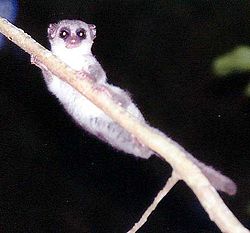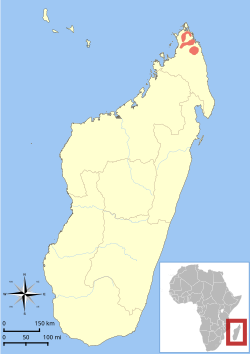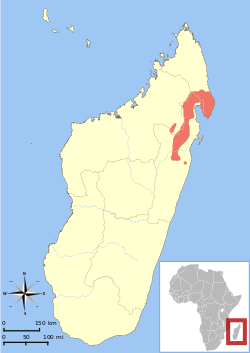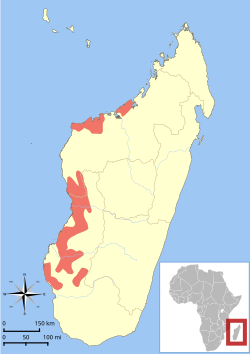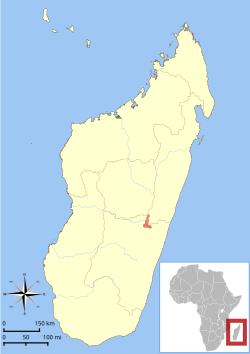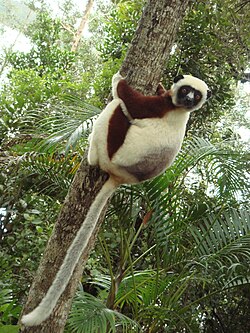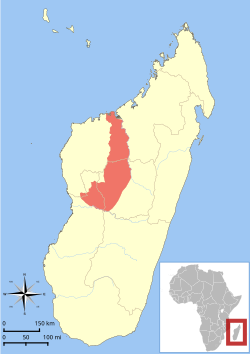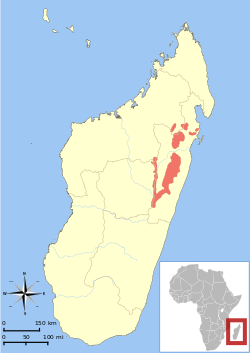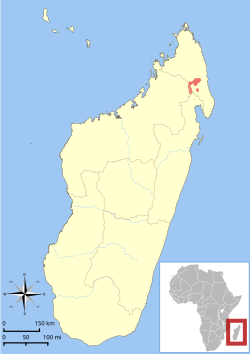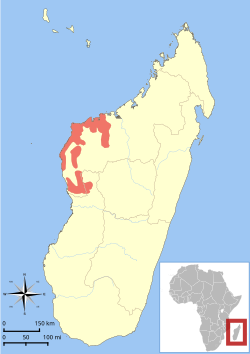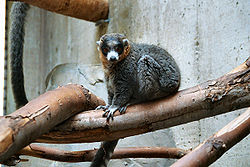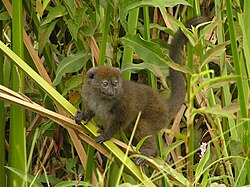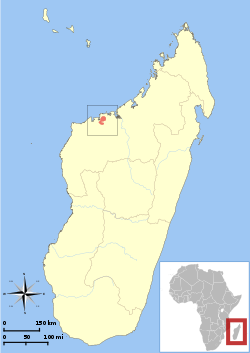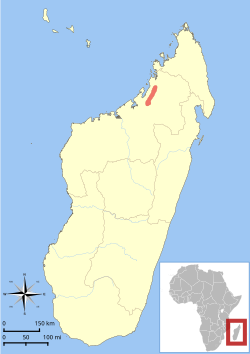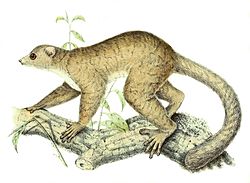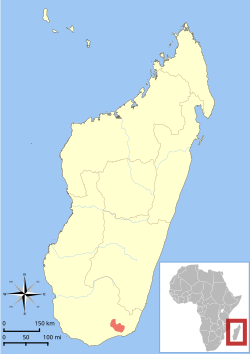| Common name | Scientific name and subspecies | Range | Size and ecology | IUCN status and estimated population |
|---|
| Anosy mouse lemur
| M. tanosi
Rasoloarison, Weisrock, Yoder, Rakotondravony, & Kappeler, 2013 | Southeastern Madagascar | Size: 10–16 cm (4–6 in) long, plus 11–15 cm (4–6 in) tail [28]
Habitat: Forest [29]
Diet: Fruit and insects [29] | EN
Unknown  [29] [29]
|
|---|
| Arnhold's mouse lemur
| M. arnholdi
Louis et al., 2008 | Northern Madagascar
 | Size: 9–13 cm (4–5 in) long, plus 10–14 cm (4–6 in) tail [30]
Habitat: Forest [31]
Diet: Insect secretions, arthropods, small vertebrates, fruit, and flowers [32] | VU
Unknown  [31] [31]
|
|---|
| Bemanasy mouse lemur
| M. manitatra
Hotaling et al., 2016 | Southeastern Madagascar | Size: 12–13 cm (5 in) long, plus about 15 cm (6 in) tail
Habitat: Forest [33]
Diet: Insect secretions, arthropods, small vertebrates, fruit, and flowers [32] | CR
Unknown  [33] [33]
|
|---|
| Bongolava mouse lemur
| M. bongolavensis
Olivieri et al., 2007 | Northern Madagascar
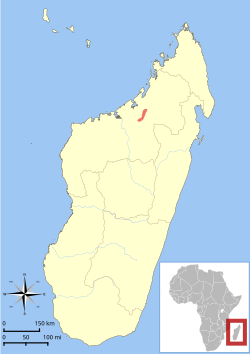 | Size: 11–14 cm (4–6 in) long, plus 14–17 cm (6–7 in) tail [34]
Habitat: Forest [35]
Diet: Insect secretions, arthropods, small vertebrates, fruit, and flowers [32] | EN
Unknown  [35] [35]
|
|---|
| Brown mouse lemur  | M. rufus
Geoffroy, 1834 | Southeastern Madagascar
 | Size: About 13 cm (5 in) long, plus about 12 cm (5 in) tail [36]
Habitat: Forest [37]
Diet: Fruit, as well as insects, leaves, flowers, gum, nectar, and pollen [36] | VU
Unknown  [37] [37]
|
|---|
| Claire's mouse lemur  | M. mamiratra
Andriantompohavana et al., 2006 | Northern Madagascar
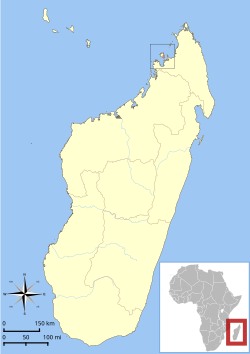 | Size: 11–14 cm (4–6 in) long, plus 14–17 cm (6–7 in) tail [38]
Habitat: Forest [39]
Diet: Insect secretions, arthropods, small vertebrates, fruit, and flowers [32] | EN
Unknown  [39] [39]
|
|---|
| Danfoss's mouse lemur
| M. danfossi
Olivieri et al., 2007 | Northern Madagascar
 | Size: 10–12 cm (4–5 in) long, plus 15–17 cm (6–7 in) tail [40]
Habitat: Forest [41]
Diet: Insect secretions, arthropods, small vertebrates, fruit, and flowers [32] | VU
Unknown  [41] [41]
|
|---|
| Ganzhorn's mouse lemur
| M. ganzhorni
Hotaling et al., 2016 | Southeastern Madagascar | Size:
Habitat: Forest [42]
Diet: Fruit and insects [42] | EN
Unknown  [42] [42]
|
|---|
| Gerp's mouse lemur 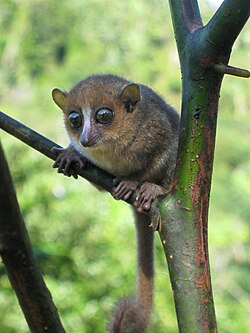 | M. gerpi
Radespiel et al., 2012 | Eastern Madagascar
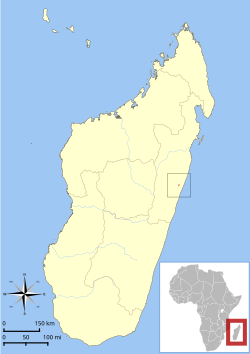 | Size: 9–10 cm (4 in) long, plus about 15 cm (6 in) tail [43]
Habitat: Forest [44]
Diet: Insect secretions, arthropods, small vertebrates, fruit, and flowers [32] | CR
Unknown  [44] [44]
|
|---|
| Golden-brown mouse lemur  | M. ravelobensis
Zimmermann, Cepok, Rakotoarison, Zietemann, & Radespiel, 1998 | Northern Madagascar
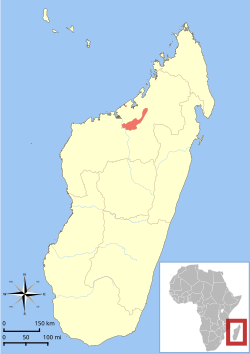 | Size: 12–14 cm (5–6 in) long, plus 14–18 cm (6–7 in) tail [45]
Habitat: Forest [46]
Diet: Gum, insect excretions, nectar, fruit, leaves, and animal matter [46] | VU
Unknown  [46] [46]
|
|---|
| Goodman's mouse lemur  | M. lehilahytsara
Roos & Kappeler, 2005 | Northeastern Madagascar
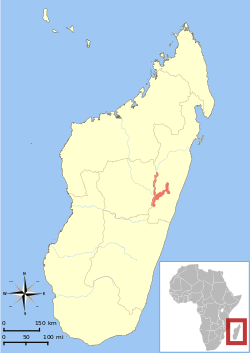 | Size: 9–10 cm (4 in) long, plus 11–12 cm (4–5 in) tail [47]
Habitat: Forest [48]
Diet: Fruit and insects [48] | NT
Unknown  [48] [48]
|
|---|
| Gray mouse lemur 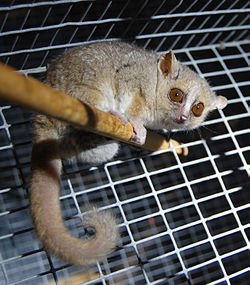 | M. murinus
(J. F. Miller, 1777) | Western and southern Madagascar
 | Size: 12–14 cm (5–6 in) long, plus 13–15 cm (5–6 in) tail [49]
Habitat: Forest and shrubland [50]
Diet: Insects, as well as small reptiles, plants, leaves, fruit, and flowers [49] | LC
Unknown  [50] [50]
|
|---|
| Jolly's mouse lemur
| M. jollyae
Louis et al., 2006 | Eastern Madagascar
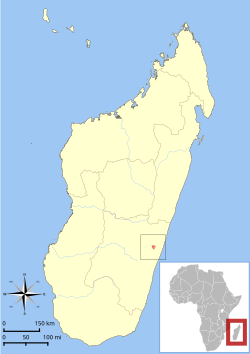 | Size: 9–10 cm (4 in) long, plus 12–13 cm (5 in) tail [51]
Habitat: Forest [52]
Diet: Fruit [52] | EN
Unknown  [52] [52]
|
|---|
| MacArthur's mouse lemur
| M. macarthurii
Radespiel et al., 2008 | Northern Madagascar
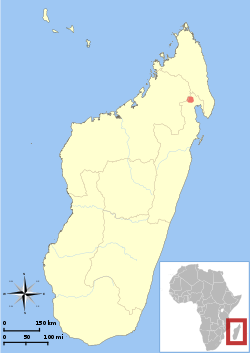 | Size: 11–14 cm (4–6 in) long, plus 13–15 cm (5–6 in) tail [53]
Habitat: Forest [54]
Diet: Insect secretions, arthropods, small vertebrates, fruit, and flowers [32] | EN
Unknown  [54] [54]
|
|---|
| Madame Berthe's mouse lemur 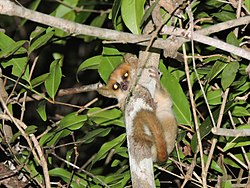 | M. berthae
Rasoloarison, Goodman, & Ganzhorn, 2000 | Western Madagascar
 | Size: 9–11 cm (4 in) long, plus 12–14 cm (5–6 in) tail [55]
Habitat: Forest [56]
Diet: Honeydew, as well as gum, flowers, fruit, arthropods, and small vertebrates [55] | CR
Unknown  [56] [56]
|
|---|
| Margot Marsh's mouse lemur
| M. margotmarshae
Andriantompohavana et al., 2006 | Northern Madagascar
 | Size: 8–13 cm (3–5 in) long, plus 11–16 cm (4–6 in) tail [30]
Habitat: Forest [57]
Diet: Insect secretions, arthropods, small vertebrates, fruit, and flowers [32] | EN
Unknown  [57] [57]
|
|---|
| Marohita mouse lemur
| M. marohita
Rasoloarison, Weisrock, Yoder, Rakotondravony, & Kappeler, 2013 | Eastern Madagascar
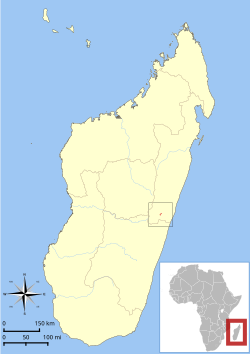 | Size: 13–15 cm (5–6 in) long, plus 13–15 cm (5–6 in) tail [28]
Habitat: Forest [58]
Diet: Insect secretions, arthropods, small vertebrates, fruit, and flowers [32] | CR
Unknown  [58] [58]
|
|---|
| Jonah's mouse lemur
| M. jonahi
Schüssler et al., 2020 | Northeastern Madagascar | Size: 12–14 cm (5–6 in) long, plus 12–14 cm (5–6 in) tail [53]
Habitat: Forest [59]
Diet: Fruit and insects [59] | EN
Unknown  [59] [59]
|
|---|
| Northern rufous mouse lemur
| M. tavaratra
(Rasoloarison, Goodman, & Ganzhorn, 2000) | Northern Madagascar
 | Size: 11–14 cm (4–6 in) long, plus 14–17 cm (6–7 in) tail [60]
Habitat: Forest and shrubland [61]
Diet: Insect secretions, arthropods, small vertebrates, fruit, and flowers [32] | VU
Unknown  [61] [61]
|
|---|
| Nosy Boraha mouse lemur
| M. boraha
Hotaling et al., 2016 | Northeastern Madagascar | Size:
Habitat: Unknown [62]
Diet: Insect secretions, arthropods, small vertebrates, fruit, and flowers [32] | DD
Unknown  [62] [62]
|
|---|
| Pygmy mouse lemur 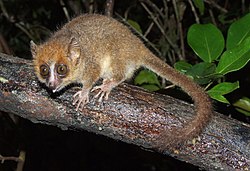 | M. myoxinus
Peters, 1852 | Western Madagascar
 | Size: 12–13 cm (5 in) long, plus 24–26 cm (9–10 in) tail [63]
Habitat: Forest [64]
Diet: Fruit, as well as flowers, gums, and insects [63] | VU
Unknown  [64] [64]
|
|---|
| Reddish-gray mouse lemur  | M. griseorufus
Kollman, 1910 | Southern Madagascar
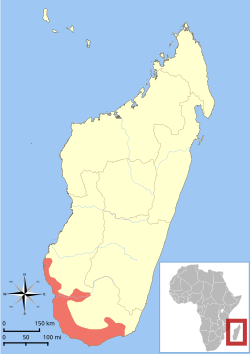 | Size: 11–14 cm (4–6 in) long, plus 13–16 cm (5–6 in) tail [47]
Habitat: Forest and shrubland [65]
Diet: Fruit and gum, as well as flowers and arthropods [65] | LC
Unknown  [65] [65]
|
|---|
| Sambirano mouse lemur
| M. sambiranensis
Rasoloarison et al., 2000 | Northern Madagascar
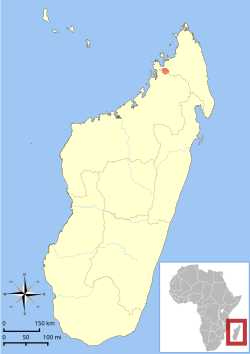 | Size: 11–13 cm (4–5 in) long, plus 13–15 cm (5–6 in) tail [66]
Habitat: Forest [67]
Diet: Insect secretions, arthropods, small vertebrates, fruit, and flowers [32] | EN
Unknown  [67] [67]
|
|---|
| Simmons' mouse lemur
| M. simmonsi
Louis et al., 2006 | Eastern Madagascar
 | Size: 9–10 cm (4 in) long, plus 14–15 cm (6 in) tail [68]
Habitat: Forest [69]
Diet: Insect secretions, arthropods, small vertebrates, fruit, and flowers [32] | EN
Unknown  [69] [69]
|
|---|




